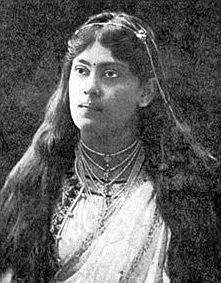Important Topics: Women in Indian Freedom Struggle
 The
question of social reform remained alive in the nationalist debates during
freedom struggle. Women’s consciousness around social and national question grew
simultaneously. Both men and women were leading the social reform movements
since the 1880s and among various debates ‘Personal is Political’ was the
recurring theme.
The
question of social reform remained alive in the nationalist debates during
freedom struggle. Women’s consciousness around social and national question grew
simultaneously. Both men and women were leading the social reform movements
since the 1880s and among various debates ‘Personal is Political’ was the
recurring theme.
Factors which helped in arousing women’s consciousness
- Gandhi, during the freedom movement in 1920, successfully managed to evolve his discourse on the position of women both within and outside the domain of home. Issues such as child marriage and widow remarriage were simultaneously addressed.
- The late 19th century educational reforms produced a new variety of reading and writing public. Educational and political awareness through newspapers influenced the educated. They discussed about radical ideas for women empowerment. E.g. In 1908, Rokeya Sakhawat wrote ‘Sultana’s Dream’ in which idea of women’s own governance system was introduced.
- 19th century women’s own organisation mushroomed all over India. Sarala Debi Chaudhurani organised ‘Bharat Stree Mahamandal’ in 1910. She combined Hindu revivalism with political protest
Role played by women in freedom struggle
- During Swadeshi campaign their activities were limited to boycott of foreign clothand picketing of liquor shops. A nationalistic cult around Bharat Mata (mother India) started to emerge which further necessitated the role of women.
- In the second phase of women participation, idea of Home Rule and constitutionalism became dominant. Some western women played significant role in this. Annie Besant, who became the first woman president of Indian National congress, launched Home Rule movement.
- Margret Cousins drafted Indian women’s voting rights bill and launched Women’s India Association. Sarojini Naidu emerged as an important national leader who later became the President of INC.
- In third phase, the women’s participation in Non Cooperation movement helped in incorporating women from all over India. Independent bodies of women such as Rashtriya Stree Sanghas were fused with District Congress Committees. It also saw inclusion of women from all sections – Hindu/ Muslim, widows, scheduled/marginalised sections.
- Bi Amma, the mother of Ali brothers addressed 6000 women to join men in picketing. In Andhra Pradesh, a vibrant Durgabai collected over a thousand devadasi to hear Gandhi’s speech.
- Gandhi’s vision tried to transform widow’s personal renunciation into a political ideology. It was this politicized and idealized Hindu widowhood which was used by Gandhi to motivate public consciousness towards a pacific but consistent struggle.
- The next stage of national movement saw mounted levels of scale and space of women’s participation. In a book called Mother India, the writer Katherine Mayo criticised the Hindu men and slave like condition of women within the family. Nationalists and reformers were compelled to focus on families and making the domestic space non violent. Also this criticism bound Indian men and women together to national honour.
- During Civil Disobedience, women volunteers participated in marches boycotts and prabhat pheris. Desh Sevika Sangh, patriotic groups within their association, was formed for passive resistance. Sarojini Naidu, Muhtulaxmi Reddy, Margret Cousins were put in jail.
- In the event of men’s arrest, the women’s organisation took on the task of carrying on civil disobedience and organising meetings. Once the women’s nationalist consciousness was awakened in varying degrees, they began exploring different methodologies of achieving political freedom.
- Hindustan Socialist Republican Association (HSRA) saw contribution by Durgavati Devi who helped Bhagat singh in his escape after the Saunders killing. Kalpna Dutt of Indian Republican Army led the armed resistance along with Surya sen.She was joined with Pritilata Waddedar in 1931 in attacking the European club in Chittagong.
Conclusion: The image and magnitude of participation of the Indian women within the national movement was drawn from the multilayered nations of Mother India and Victorian morality. The women who led nationalist campaign were mostly upper middle class. Yet in the recent year dalit and tribal women have been claiming participation in the nation’s history. Many such histories are waiting to be written.
data-matched-content-ui-type="image_card_stacked"
Useful Tips & Articles
तैयारी कैसे करें? |
EXAM SUBJECTS |
STUDY RESOURCESDownload Free eBooks |



